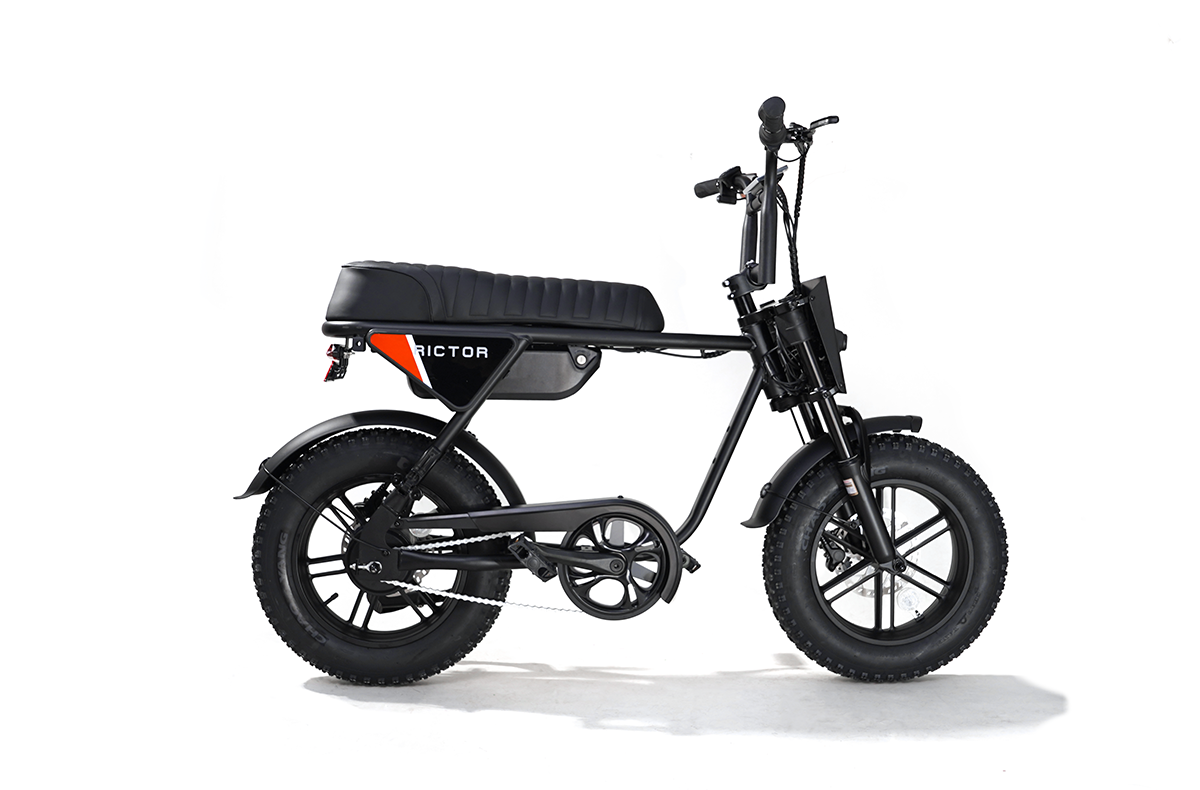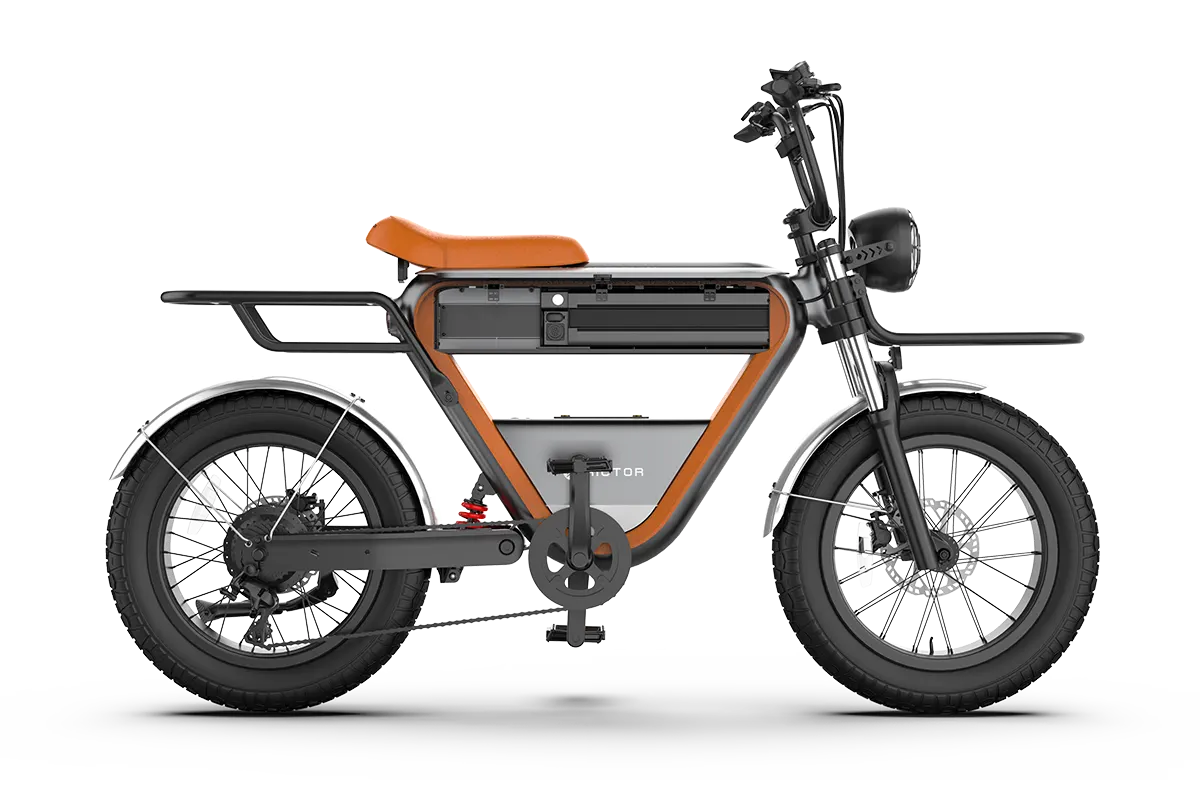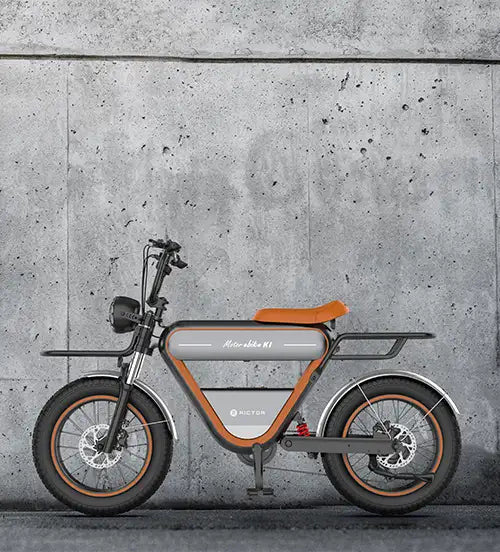
How Do Electric Bike Work
Electric bikes are a revolutionary form of transportation, combining traditional pedaling with an electric motor to enhance the rider's efficiency.
They’ve emerged as a greener and more efficient alternative to cars, offering users the freedom to travel longer distances with less effort.
To understand how electirc bikes work, we need to break down the core components that allow them to function effectively.
How Electric Bike Motors Work
Electric bikes rely on three main components to operate: the motor, the battery, and the controller. These three elements work together to provide seamless assistance while pedaling or through throttle use.
Motor
The motor is the heart of an electric bike, responsible for delivering the necessary power to assist the rider.
Motors in elecytrics can be either hub-based (located in the wheels) or mid-drive (placed at the center, near the pedals).
When activated, the motor receives power from the battery, converting electrical energy into mechanical energy that propels the bike forward.
The motor operates based on rider input, either through pedal assist or throttle mode. In pedal-assist mode, sensors detect the rider’s pedaling motion, which signals the motor to provide additional power. In throttle mode, the rider can control the speed directly using a hand throttle, much like a motorcycle.
Battery
The battery is the power reservoir of the motored bike, storing the energy that the motor requires to function.
Most electric bikes use lithium-ion batteries because they offer a great balance between energy density, weight, and longevity.
The capacity of the battery, typically measured in watt-hours (Wh), determines how far you can travel on a single charge. The higher the capacity, the longer the range.
When the rider activates the motor through either pedaling or the throttle, the battery delivers power to the motor.
Without the battery, the electric bike would essentially function like a regular bicycle.
Controller
The controller acts as the brain of the electric bike, regulating the flow of power from the battery to the motor based on inputs from the sensors and the rider’s actions.
It controls everything from the speed of the motor to braking and even battery management. Modern controllers are highly efficient, ensuring the motor delivers optimal performance while conserving energy.
Different Modes
Electric bikes are designed to make riding easier by offering two primary modes of motor engagement: pedal assist and throttle mode.
Pedal assist, also known as pedelec, requires the rider to pedal for the motor to engage.
The system uses cadence or torque sensors to detect how much force or speed is being applied to the pedals.
Based on this information, the motor provides proportional assistance to help reduce the rider’s effort. For instance, if the rider is pedaling uphill, the motor will supply more power to make the climb easier.
Pedal assist is usually available in multiple levels, ranging from light assistance for flat terrain to higher assistance for steep hills.
This allows riders to customize the amount of help they receive, making e-bikes highly versatile for different terrains and fitness levels.
Throttle mode allows the rider to power the bike without pedaling at all.
With the throttle, the rider can control the bike's speed using a handlebar control, similar to a motorcycle.
This mode is particularly useful when you want to take a break from pedaling or need a quick burst of speed.
Pedal-assist mode requires the rider to continue pedaling for the motor to provide assistance.
While throttle mode offers convenience, pedal assist tends to be more energy-efficient, extending the battery range since it works in conjunction with your pedaling efforts.
SEE ALSO What is an Electric Bike & What to Know Before Buying

Regenerative Braking Work On Electric Bikes
Regenerative braking is a feature in some electric bikes that allows the motor to act as a generator when the rider applies the brakes.
In this process, kinetic energy (the energy produced when the bike is moving) is converted back into electrical energy and stored in the battery.
However, while this may sound efficient in theory, in practice, the efficiency of regenerative braking on electric bikes is quite low.
The main reason for this inefficiency is the relatively small amount of kinetic energy that can be recovered during typical e-bike use.
Unlike electric cars, which have more mass and travel at higher speeds (making regenerative braking more effective), electrical bikes recover only a small percentage of the energy expended during a ride.
This results in minimal battery recharge—often only 5-10% of the energy can be reclaimed, and that too under ideal conditions like long downhill rides.
It requires more complex motor designs, such as direct-drive hub motors, which tend to be heavier and bulkier compared to mid-drive motors or geared hub motors.

Motor Types and Performance Differences
The type of motor used in an ebike plays a significant role in its overall performance, influencing aspects like speed, torque, and efficiency.
There are two primary motor types used in electric bikes: hub motors and mid-drive motors.
-
Hub motors are located in either the front or rear wheel and deliver power directly to the wheel. They are known for their simplicity and ease of maintenance but can be less efficient, especially when riding on steep inclines or rough terrain.
-
Mid-drive motors, positioned near the pedals, transfer power through the bike's drivetrain, utilizing the bike’s gears to achieve better torque and overall efficiency. This makes mid-drive motors superior for hill climbing and riding on challenging terrain. They also provide a more balanced weight distribution, which can improve handling and stability.
While both types of motors are effective, mid-drive motors are generally considered better for performance, while hub motors are more budget-friendly and easier to maintain.
Sensors and Controllers
The smooth operation of an electric bike relies on sensors and controllers, which ensure that the motor delivers the right amount of power based on the rider’s input and current conditions.
Electric bikes use various types of sensors to regulate power output and ensure a responsive ride. The most common sensors are cadence sensors and torque sensors.
-
Cadence sensors detect the speed at which the rider is pedaling and adjust the motor's power accordingly.
-
Torque sensors measure how much force the rider is applying to the pedals, providing smoother and more proportional motor assistance.
These sensors communicate with the e-bike’s controller to fine-tune the motor's performance in real-time.
Can Ebikes Be Ridden Without Motor
One of the unique aspects of electric bikes is that they can still function as traditional bicycles when the motor is turned off or if the battery is depleted.
Riding without motor assistance allows users to conserve battery power for later use or get more exercise when desired.
In this case, the electric bike behaves just like a regular bike, relying on the rider's pedal power.
But it will be more heavier due to the added components.
FAQs
How often should I replace my electric bike battery?
Electric bike batteries typically last for 3 to 5 years, depending on how often they are charged and the care they receive. Over time, battery capacity diminishes, reducing the range of the bike.
Are electric bikes allowed on mountain biking trails?
The rules for electric bikes on mountain biking trails vary by region. Some trails allow Class 1 e-bikes, which require pedaling for assistance, while others may restrict all motorized vehicles. Always check local regulations before riding.
Can I upgrade my electric bike’s motor for more speed?
In some cases, it’s possible to upgrade an electric bike’s motor for more power and speed, but doing so may affect the bike’s safety, legality, and battery performance. It’s essential to consult with a professional to ensure compatibility and safety.




